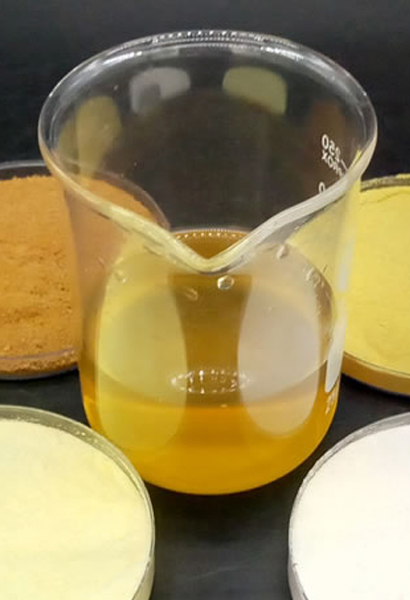
Kalbon Powdered Activated Carbon (PAC)
Powder Series
PAC is made from organic materials with high carbon contents such as wood, lignite and coal.
Powdered Activated Carbon (PAC) typically has a diameter less than 0.1 mm and an apparent density ranging between 23 and 46 lb/ft3, depending on the material used and manufacturing process. Iodine and molasses numbers are typically used to characterize PAC. These numbers describe the quantity of small and large pore volumes in a sample of PAC. A minimum iodine number of 500 is specified for PAC by AWWA standards.
Powdered Activated Carbon is used by water treatment plants on either a full time basis or as needed for taste and odour control or removal of organic chemicals. PAC can be fed as a powder using dry feed equipment or as a slurry using metering pumps. Dry feed systems are typically used for smaller dosages. PAC can also be mixed with water and fed as a slurry. Slurry systems are normally used when PAC is frequently added and the required dosages are high.
Powdered Activated Carbon is normally added early in the treatment process and is subsequently removed either by sedimentation or by the filter beds during backwashing. The PAC application point should allow for (1) an adequate contact time between the PAC and organics, and (2) avoid coating PAC particles with other water treatment plant chemicals. A minimum contact time of about 15 minutes is required for most taste and odour compounds; however, significantly longer contact times may be required for Methyl-Iso-Borneol (MIB) and Geosmin removal.
Powdered Activated Carbon dosages can range between 1 to 100 mg/L depending on the type and concentrations of organic compounds present. Dosages of 1 to 20 mg/L are typical for nominal taste and odour control. Application of Powdered Activated Carbon generates additional sludge which is not able to be regenerated as is spent GAC. Powdered Activated Carbon sludge will contain elevated concentrations of the contaminants removed and must be disposed in accordance with State and federal laws; however, it is not likely to be classified as a hazardous waste.
Common powdered activated carbon mesh sizes used are.
Minus 80, Minus 200, Minus 325 and DCF
